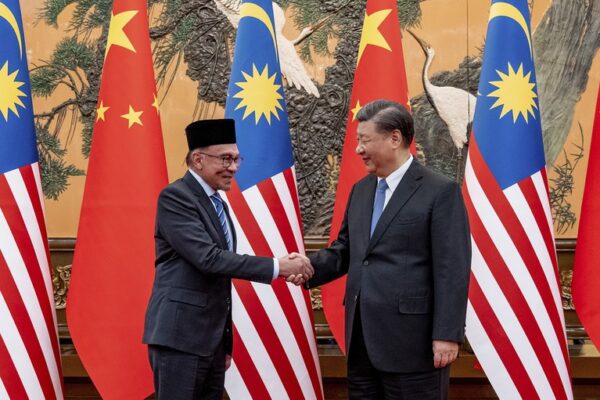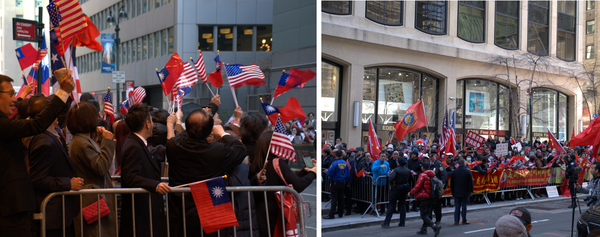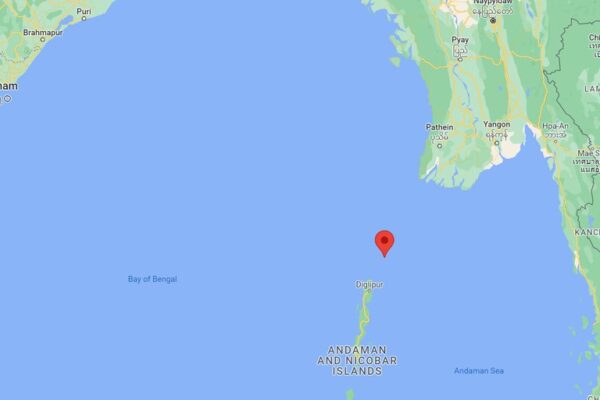
China promises resolute response after Tsai-McCarthy meeting
China vowed Thursday to take “strong and resolute measures” after a meeting between Taiwan President Tsai Ing-wen and U.S. House Speaker Kevin McCarthy in California, as a Chinese aircraft carrier sailed near Taiwan, putting the island’s military on guard. At the same time, the U.S. aircraft carrier USS Nimitz sailed in the waters east of Taiwan, 740 kilometers (400 nautical miles ) from the island, according to Taiwan’s defense ministry. The Nimitz may be assisting Taiwan “in monitoring and preventing Chinese military actions in a worst case scenario,” said a Taiwanese military analyst. Tsai’s transit in the U.S. and her meeting with McCarthy, has provoked protests from multiple major institutions in China, including the Ministry of Defense, the Ministry of Foreign Affairs, the National People’s Congress and the Communist Party’s Central Office, Shen Ming-shih from Taiwan’s main military think tank INDSR told Radio Free Asia. ‘Violation of China’s sovereignty’ In a statement released Thursday, a Chinese Foreign Ministry spokesperson condemned the “high-profile” meeting between the Taiwanese leader and the U.S. House Speaker, as well as Tsai’s stopovers in the United States. “This is essentially the United States acting with Taiwan to connive at ‘Taiwan independence’ separatists’ political activities in the United States,” the release said, “It seriously infringes upon China’s sovereignty and territorial integrity.” It accused the U.S. of “crossing the line and acting provocatively” against China. “This has put cross-Strait relations in serious difficulty.” “The Taiwan question is at the core of China’s core interests and the first red line that must not be crossed in China-U.S. relations,” the ministry reiterated. “China will take strong and resolute measures to defend our sovereignty and territorial integrity,” it warned. The aircraft carrier USS Nimitz taking part in a trilateral maritime exercise with Japanese and South Korean navies, April 3-4, 2023. Credit: U.S. Navy In the week before the Tsai-McCarthy meeting, there was no noticeable increase of Chinese military movements near Taiwan, leading to the prediction by Taiwan National Security chief Tsai Ming-yen that “the government expected a less severe reaction” from Beijing than when McCarthy’s predecessor Nancy Pelosi visited Taiwan last August. However on Wednesday, as Tsai met McCarthy outside Los Angeles, China’s Shandong aircraft carrier group “passed through the Bashi Channel and entered Taiwan’s southeastern waters,” Taiwan’s defense ministry reported. Intimidation Japan’s Ministry of Defense confirmed in a statement issued Thursday that three Chinese naval vessels including the Kuznetsov-class aircraft carrier Shandong, a Zhangkai II-class frigate and a Fuyu-class fast combat support ship, were spotted sailing in the western Pacific Ocean. It said this is the first time that the Shandong has sailed in the Pacific Ocean. Chinese media also said it is the Shandong’s first exercise in the West Pacific as its regular operation area is the South China Sea. A picture of the Chinese aircraft carrier released with the statement shows a large number of warplanes on the deck, including J-15 multirole fighters, Z-18 transport helicopters and at least one Z-9 reconnaissance helicopter. Taiwan’s Minister of Defense Chiu Kuo-cheng told lawmakers that as of Thursday morning the Chinese carrier was 200 nautical miles (370 kilometers) east of Pingtung County in southern Taiwan. The carrier-based aircraft are supposed to conduct some flight training, Chiu said, but “no planes have taken off nor landed yet.” He said he could not rule out that the carrier is preparing for a military exercise. “One of the main purposes of the Shandong’s current mission is to issue a warning to Taiwan and the U.S.,” said Shen Ming-shih, who is acting deputy chief executive officer at the Institute for National Defense and Security Research. “When President Tsai’s plane flies from Los Angeles to Taiwan, the Chinese aircraft carrier may deliberately approach the route,” Shen said, adding that in his opinion “it is only for intimidation and not an actual attack.” The analyst told RFA the Taiwanese and the U.S. military have already made preparations for possible events. Aircraft taking off from USS Nimitz during a trilateral maritime exercise with Japanese and South Korean navies, April 3-4, 2023. Credit: U.S. Navy Minister Chiu said that the Taiwanese military is monitoring the situation closely and has tasked aircraft, Navy vessels, and land-based missile systems with responding accordingly. A couple of Taiwanese Navy’s frigates are currently located just 10 kilometers away from the Shandong. The minister also said that the U.S. aircraft carrier USS Nimitz is currently 400 nautical miles (740 kilometers) east of Taiwan. While he can’t confirm that the Nimitz is here for the Shandong, given the situation “there’s a connection.” The nuclear-powered aircraft carrier has just taken part in a trilateral maritime exercise with the Japanese and South Korean navies in the East China Sea from April 3-4. The U.S. Navy said in a statement that currently “ships from the USS Nimitz Carrier Strike Group are conducting operations in the U.S. 7th Fleet’ region,” which covers most of the Indo-Pacific. Edited by Mike Firn.







